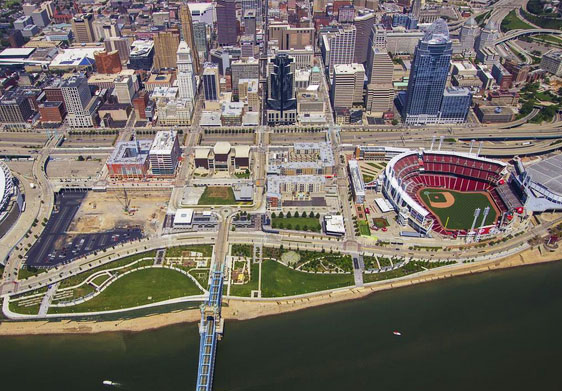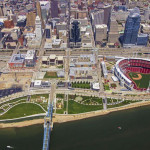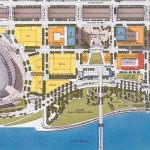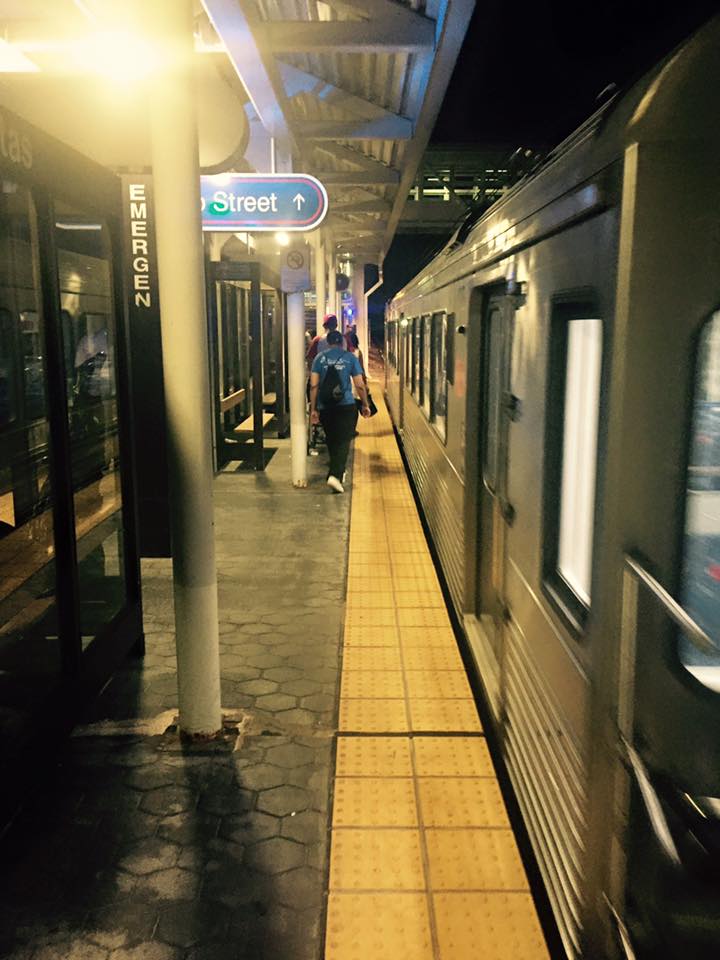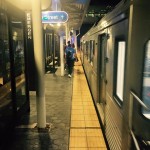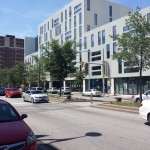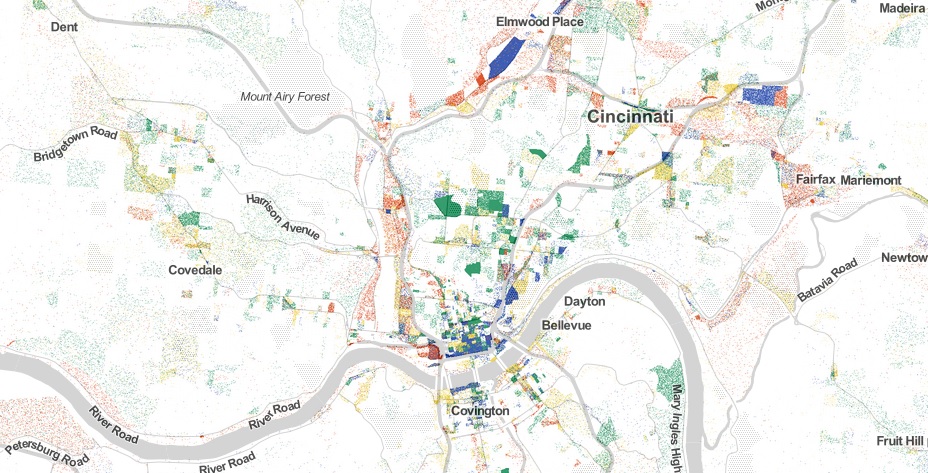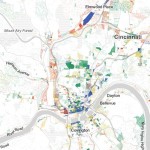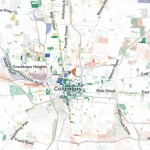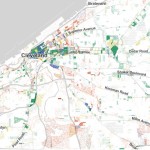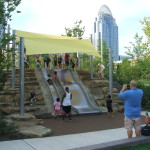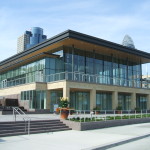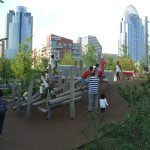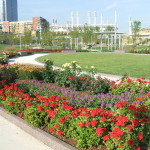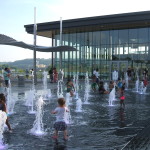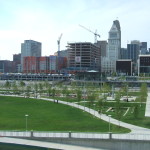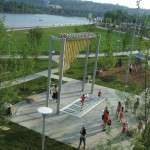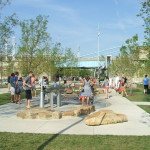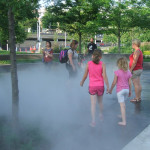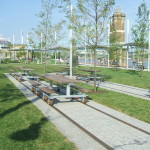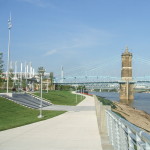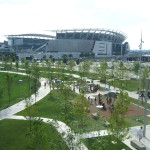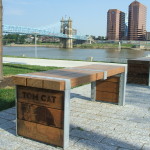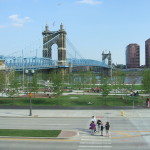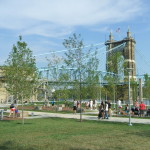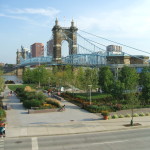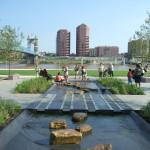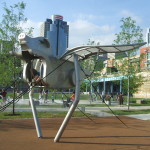Business leaders and public officials from the City of Cincinnati and Hamilton County will gather tomorrow morning to celebrate the groundbreaking of the next phase of work at The Banks.
As has been done in the past at the massive central riverfront development, the first work to be done will be the construction of a public parking garage that will lift the project out of the Ohio River’s flood plain. From there, the existing public streets surrounding the project site will be extended to frame the block.
While the event is being touted as a groundbreaking ceremony, workers from Prus Construction and Beaty Construction began mobilizing on the site to perform preparation work. The news is a bit of a departure from previous announcements that said construction work would hold off until the close of the Bengals season in order to preserve parking for tailgaters at Paul Brown Stadium.
In this particular phase of work, project officials say that 690 parking spaces will be built on two levels that will be connected with the rest of the underground parking deck at The Banks, which has been casually described as one of the largest underground parking structures in North America.
This $29.3 million effort is being jointly funded by the City of Cincinnati, Hamilton County, and the State of Ohio’s Jobs Ohio program. Representatives from the various public agencies funding the project say that it will create an estimated 200 jobs, with at least 30% of the contract totals spent with Small Business Enterprises.
Such a claim for small business inclusion is on-target for what the project has been delivering thus far. As of June 2015, the latest reporting date, The Banks has had an average of 36% small business participation and approximately 17.5% minority and female workforce participation.
Nearby work continues on the private sector vertical construction of Radius, a 291-unit apartment midrise with 19,000 square feet of street-level retail, and the 340,000-square-foot General Electric Global Operations Center.
Once these two phases of work are complete, it will allow for the next phase of Smale Riverfront Park to move forward, and will set the stage for private real estate development south of Freedom Way and in between Race and Vine Streets.
So far, Carter USA and the Dawson Company have yet to reveal what will ultimately be built on top of this latest garage extension, but most suspect it will be some combination of apartments and condominiums.
While The Banks has received much positive praise as of late, it has not come without its struggles. The retail in the first phase of the project continues to find its footing, and the area continues to struggle with a brand identity and architectural designs that people feel are worthy for the prominent piece real estate that this development occupies.
